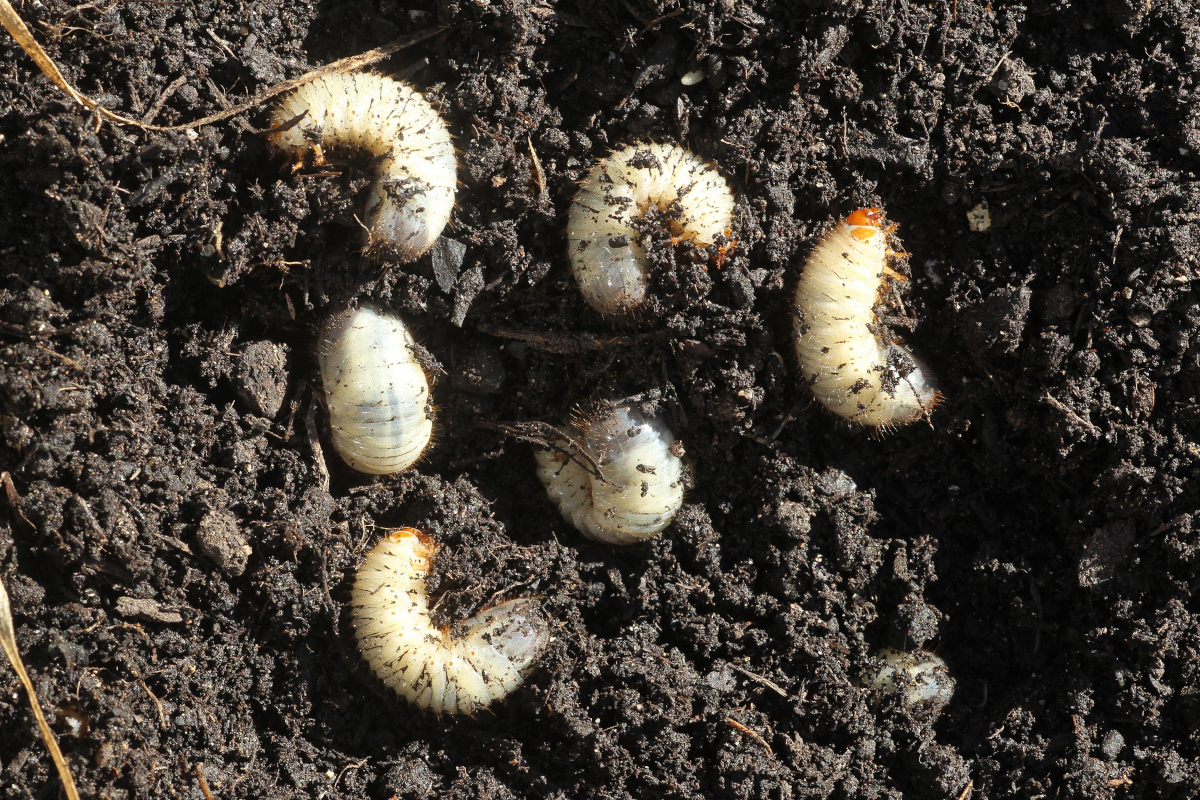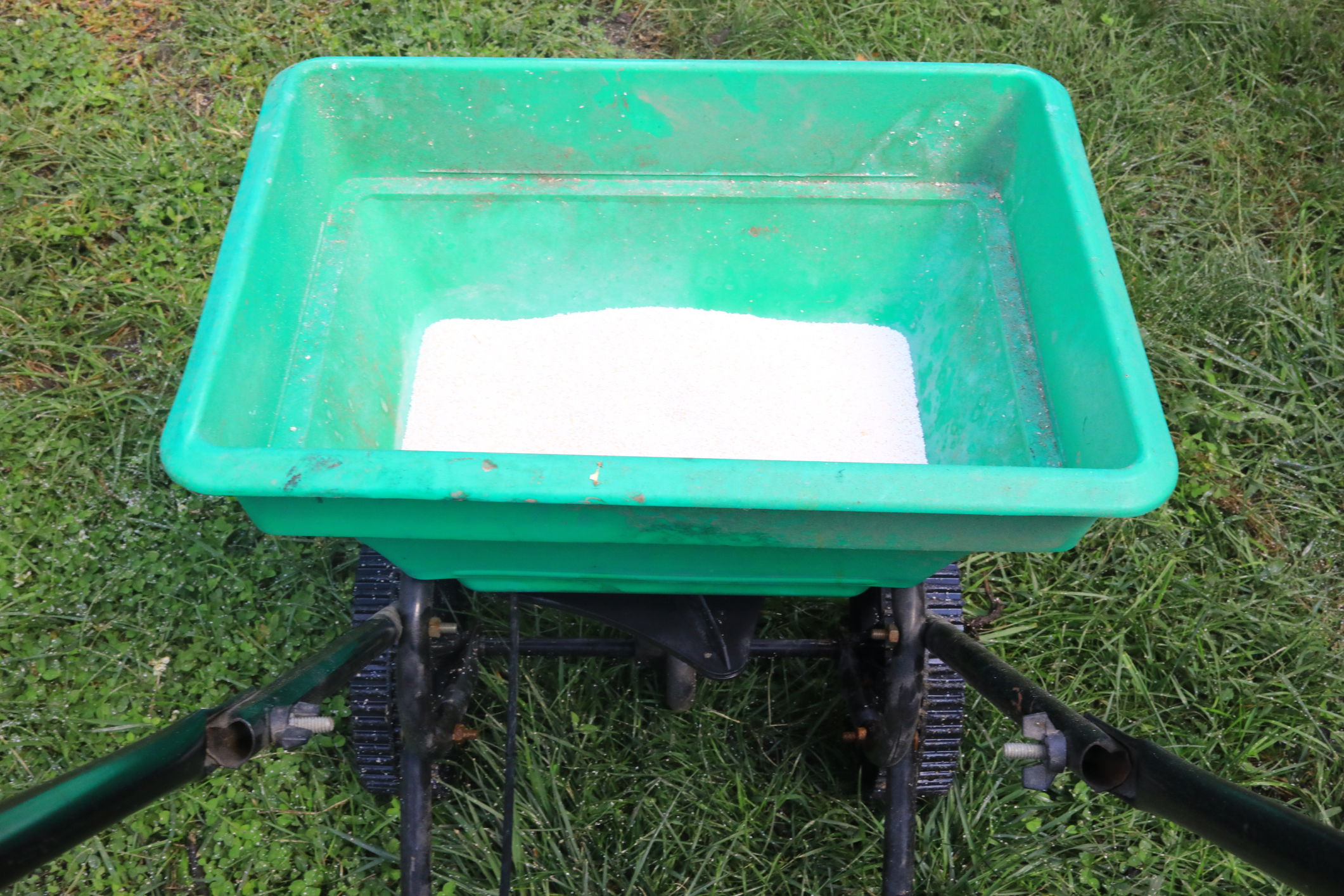

We may earn revenue from the products available on this page and participate in affiliate programs. Learn More ›
Grubs may be the first thing you think of when you see unsightly bare areas in your lawn. However, other common lawn problems, including disease and drought, can cause bare spots in your turf, too. So before considering when to apply grub control, make sure you actually need it—the majority of homeowners might not.
Tim Abbey, a Penn State Extension educator specializing in pest management and entomology, notes, “It has probably been twenty years since I have seen a lawn heavily damaged by white grubs. Sometimes a geographic area may have a problem with them, but I now consider them very sporadic.” Use the info below to determine when to apply grub control around your home, if you need to at all.
Garden grubs are beetle larvae that feed on grass roots.
The immature larvae of Japanese beetles, chafers, May bugs, and June bugs are the usual suspects people are referring to when talking about lawn-damaging garden grubs. Mature larvae of these insects vary in length from ½ to 1 ¼ inches long and usually are C-shaped. “The green June beetle is only an issue on low-cut turf due to their behavior of burrowing to the surface at night,” explains Abbey. “This pushes up mounds of dirt that can be unsightly. They feed on soil organic matter but are not major root feeders.”
Japanese beetles and chafers lay their eggs in the lawn in mid-summer. These larvae hatch within 10 days and are typically active from the beginning of August until the end of October, at which point they lie dormant until the soil warms in spring. Then, they pupate in late spring and lay eggs in mid-summer, starting the grub worm life cycle over again. If you have May bugs or June bugs, though, know that these beetles’ grub life cycles last a much longer two to three years.

Most homeowners don’t actually need to apply grub control to their lawns.
Based on 2012 data collected by Cornell University in Upstate New York, “only 20 percent of home lawns and golf course fairways” surveyed required grub control, essentially meaning grub control applied to the other whopping 80 percent would be wasted. However, that other 20 percent (or more, in certain regions) still had real pest problems on their hands. If you determine your yard has a grub infestation—rare though they may be—prompt treatment could be worth the cost and effort.
Grubs generally mature by autumn, so that makes it a good time to check your yard for grubs. You can do so by digging up a one-foot square section of your baldest turf and counting the number of larvae you find in the sample’s top 3 inches of soil. According to Michigan State University Extension, “Healthy turf, supported by frequent rain or irrigation, can support a grub population of five or more grubs per square foot with no visible turf damage.” However, a number higher than 10 grubs per square foot indicates a more serious infestation, which may require more intimate familiarization with how to get rid of grubs.
If you must apply grub control, choose a preventative type.
Preventative grub control insecticides that keep lawn grub larvae from maturing are more effective than curative insecticides, which instead aim to kill mature larvae. For the most environmentally friendly grub prevention in lawns, avoid toxic insecticides such as imidacloprid, thiamethoxam, and clothianidin. These pesticides might kill your garden grubs, but they’ll also kill any beneficial insects that come into contact with your lawn, including bees.
Instead, opt for the less toxic chlorantraniliprole, a grub killer found in products like Scotts GrubEx. This preventative grub control will kill around as many beetle larvae without indiscriminately hurting harmless insects in the process. Organic grub controls, like milky spore disease (for Japanese beetle grubs only) and beneficial nematodes (preferably Heterorhabditis bacteriophora), can also be effective options—although milky spore disease doesn’t always work well in colder climates.
Encouraging patience when using grub prevention, North Carolina State Extension states, “The results are not as rapid as with chemical insecticides, but the effects last many years.”

Certain grub control treatments should be applied at certain times of the year.
Depending on where you live and the types of grubs in your lawn soil, you’ll likely find these preventative treatments most effective by using them during the most optimal season. For example, lawns can be treated with chlorantraniliprole at any point between mid-spring and mid-summer, but it typically works best if applied before June. As for beneficial nematodes, those should be “injected” into the ground in mid to late August. Milky spore, meanwhile, should be applied in late September or early October.
Lastly, keep in mind that almost any lawn grub treatment requires damp soil during application, as well as for the treatment to be watered into the soil afterward. If you use one of the toxic grub worm insecticides listed above, be sure that you water it in with at least ½ inch of rainfall or irrigation and wait for it to dry before you allow children or pets back on the grass.
Final Thoughts
Because the grub worm treatments recommended here employ gradual controls rather than immediate ones, you’ll probably want to wait until the following autumn to do another grub count to determine whether the grub control you chose is working. You may also determine that your turf really doesn’t need to be as consistently lush as a golf course, and children and pets will be safer on grass not treated with any grub worm killers.
Iowa State University Extension may have put it best: “Many homeowners are frightened into applying grub controls because of advertisements on TV, in plant centers, or because of horror stories they have heard about grub damage. Most grub treatments are not only expensive but hard to justify from an environmental standpoint.”
